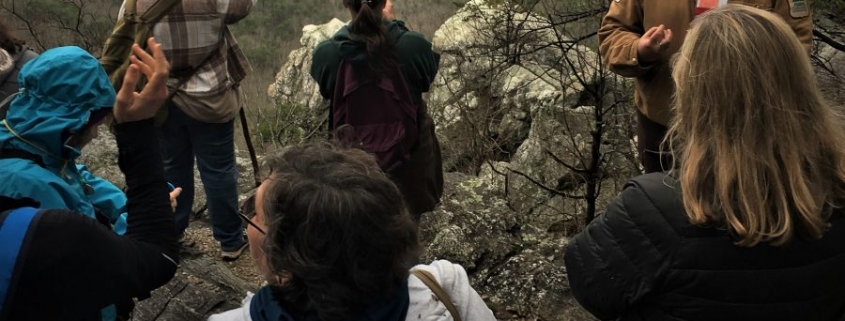Oh What a Difference a Naturalist Can Make!
Twenty-one State Parks totaling 48,000 acres constitute the Alabama State Parks System… from the Gulf coast to the Tennessee River Valley. The Parks Mission is succinct and compelling: To acquire and preserve natural areas; to develop, furnish, 0perate, and maintain recreational facilities; and to extend the public’s knowledge of the state’s natural environment. This Post addresses the final Mission element, to extend the public’s knowledge of the state’s natural environment. Five of the Parks have an assigned, on-site Naturalist: Gulf SP, Oak Mountain SP, Cheaha SP, Guntersville SP, and DeSoto SP. I’ve had the privilege and pleasure of spending at least one full day with each Naturalist touring the respective Park.
I earned my bachelor’s and doctoral degrees in western Maryland and central upstate New York, where ecotypes far different from Alabama predominate. Although I practiced industrial forestry across the six southeastern states for 12 years, I focused on timber production and not Nature at large. Over the intervening 35 years (serving nine universities from faculty to senior administrator) my interests have broadened to encompass all elements of our natural systems, albeit still mostly forests, although no longer riveted to timber production and commercial value.
Cheaha State Park
Cheaha State Park encompasses Alabama’s highest point, 2,407-foot Mt. Cheaha, an ecosystem that most closely resembles my western Maryland, central Appalachian home. Most closely, yet still far different. I grew up at latitude 39.65 degrees north. Cheaha State Park is at 33.5 degrees north, some 424 miles south (and many miles west) of my Maryland home. Spring moves northward at roughly 120 miles per week, reaching my home 3.5 weeks after passing through Cheaha. I visited my home region Mother’s Day weekend. Oaks above 2,500-feet had not yet leafed. However, I will not quibble over season length; I draw great satisfaction from having the southern Appalachians proximate to my Alabama home, along with their associated most-closely-resembling ecosystems!
I am grateful, too, that Cheaha State Park has a resident Naturalist, Mandy Pearson, a seasoned professional who graciously shared time and expertise on-site with me. I watched her on more than one occasion interact with Park visitors, intent upon sharing her knowledge and “extending the public’s knowledge of the state’s natural environment.” Cheaha also has excellent interpretive signage (see below), along with a full catalog of workshops, camps, and presentations. Check the individual Park websites for listings and descriptions.
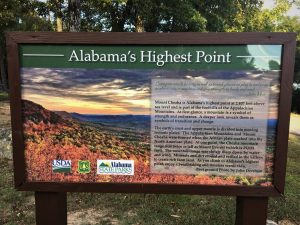
Here I am with Mandy at the Environmental Educators Association of Alabama 2019 Annual Conference, hosted by Cheaha State Park in late February. What a great way to showcase Cheaha and the entire Park System for its education mission. Lower right Mandy leads one of the Conference hikes on an exquisitely dark and foggy mid-afternoon.
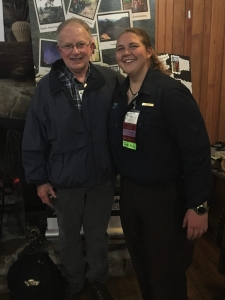
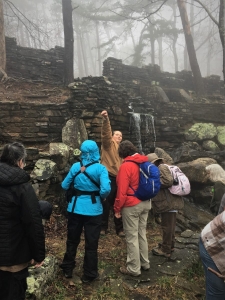
You will see as I highlight these five Parks, that we’re in Good Hands with our State Park Naturalists!
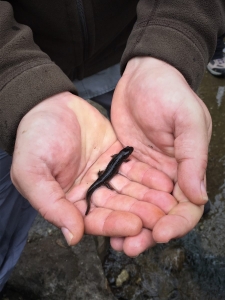
Gulf State Park
Gulf State Park hosted the State Parks Foundation Board in January. I tacked on an extra day to tour this Gulf Coast gem with Park Naturalist Kelly Reetz. Gulf Shores does not have ecosystems that remind me of home. To the contrary, I felt as though I had wandered onto foreign land. Sure, I recognized many trees, yet far more seemed exotic. Without Kelly’s informed guidance I would have been ecologically adrift. I’ve written in Natural Elixir: Lifting Your Life through Nature’s Inspiration (a book that I will soon submit to a my publisher) a chapter about spending two weeks in China (2010) without any host who could interpret native ecology. Total frustration for me to see Nature at-hand without so much as a simple children’s tree manual in English! Not so the case at Gulf State Park. Kelly knows her stuff. The Park, like Cheaha, has first-rate interpretive signage. Regrettably, of the Parks I’ve visited, these two stand alone in that regard.
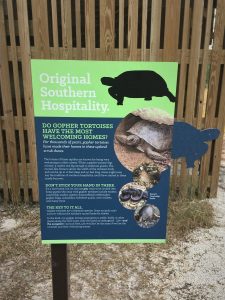
Thanks to Deepwater Horizon oil spill recovery funds, the Park has enjoyed investments sufficient to enhance all Park elements in furtherance of its mission, education included. Our day-long ramblings ranged from seaside to interior upland, xeric oak forest. If only such a competent naturalist had toured me through parts of China!
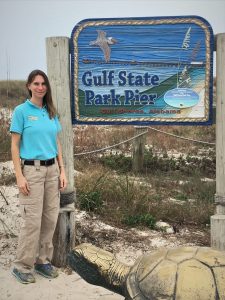
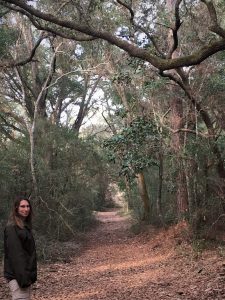
Again, and I will repeat the refrain, we’re in Good Hands with our Alabama State Parks Naturalists. Here’s Kelly making sure I can identify turkey oak!
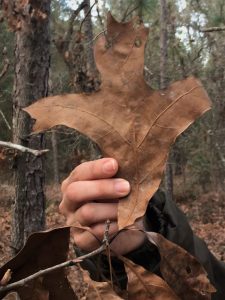
Lake Guntersville State Park
July 2018 I spent a great day afield with Park Naturalist Mike Ezell at Guntersville State Park. As with the prior Parks, I issued at least one Blog Post for each visit. Go to my Great Blue Heron Blog page (https://stevejonesgbh.com/blog/) and type the respective State Park into the search box, directing you to relevant Posts. For example, here’s the one for Guntersville: https://stevejonesgbh.com/2018/08/08/lake-guntersville-state-park/ The entrance signage is worthy, but not much in the way of interpretation within the Park.
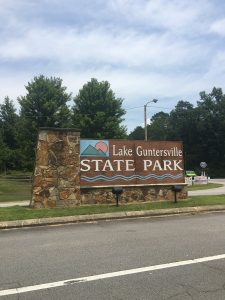
However, when seeing the Park through Naturalist Mike Ezell’s eyes and heart, who needs signage!? As you can see from the fog along the Tennessee River, we started early, covered a lot of ground, and visited secretive spots along the way.
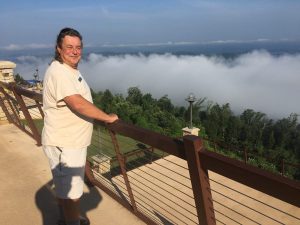
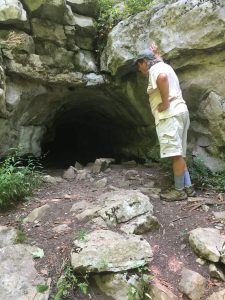
We found a persimmon tree dropping fruit by the hands-full! And Mike demonstrated clearly that we are in Good Hands with Alabama State Park Naturalists!
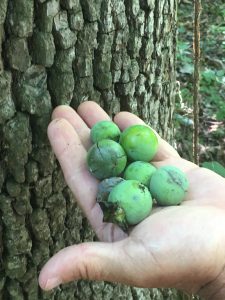
DeSoto State Park
Mid-May I toured DeSoto State Park with Naturalist Brittney Hughes on a soggy day after a nighttime deluge. See the Post that I issued just last week: https://stevejonesgbh.com/2019/05/15/the-magic-of-waters-thunder-at-desoto-state-park/ In the spirit of full disclosure I must confess that I snapped this entrance sign photo on a prior dry-day visit.
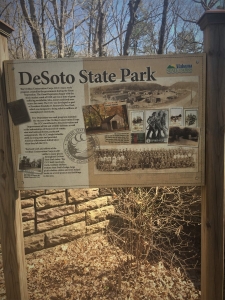
Brittney knows DeSoto State Park, from its ubiquitous sandstone outcrops and ledges to its trees and non-flowering plants, as well as other ecosystem elements. She knows the Park like the back of her hand. We spent a full day without her referring once to a trail or road map, except as we completed our day together and she guided me by map to her recommended trails for my trek the next morning.
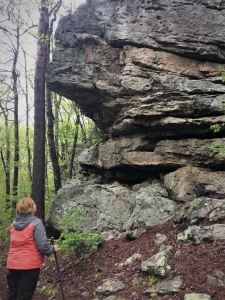

Based upon my time seeing DeSoto and the other four Naturalist-staffed Parks, I will compile a list of recommendations (through my own naturalist-lens) applicable to the Parks System broadly relative to education and interpretation.
As I made clear for each of my Naturalist-tours, we are in Good Hands with Alabama State Park Naturalists! Brittney is holding a spring wildflower new to me, Shrub Yellowroot (Xanthorhiza simplicissima).
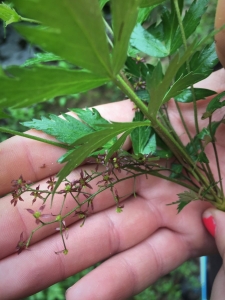
Oak Mountain State Park
I visited Oak Mountain State Park, Alabama’s largest, April 25, 2019 for the official launch of the Alabama State Parks Foundation (https://stevejonesgbh.com/2019/04/29/launching-the-alabama-state-parks-foundation/), and then stayed for the afternoon and the entire next day touring and hiking with Naturalist Lauren Muncher. Watch for at least two future Blog Posts with photos, observations, and reflections from our explorations. Please note that the North Trailhead photo below is from the Park System’s archive; all others are mine.
I relished being on the ground at Oak Mountain!
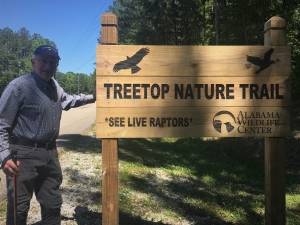
I’m sure we could have spent many days seeing the wonders of this nearly 10,000-acre Park just 20 miles south of Birmingham, our state’s largest city. Lauren is new to this role, yet she brings a wealth of related knowledge and experience to the task, including service at the on-site Alabama Wildlife Center and its Treetop Nature Trail. She knows the resident raptors as old friends! We measured the Park’s largest tree (or so we think), a 38-inch diameter yellow poplar (Liriodendron tulipifera) trail-side in a rich cove setting. I’m impressed with Lauren’s full and passionate immersion at Oak Mountain and her tireless dedication to extend the public’s knowledge of the state’s natural environment.
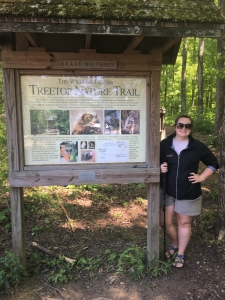
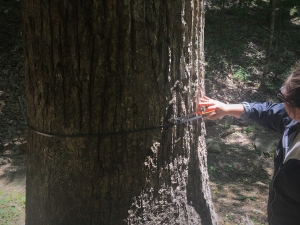
No doubt about it, we are in Good Hands with Alabama State Park Naturalists! Likewise, this Fowler’s toad (Anaxyrus fowleri) is safe a secure in Lauren’s hands, lifted from a trail surface and placed lovingly back in its natural habitat. Like all of our State Park Naturalists, Lauren cares. I recall many times over my education career observing, “People don’t care how much you know, until they know how much you care!” Kelly, Mandy, Mike, Brittney, and Lauren CARE!
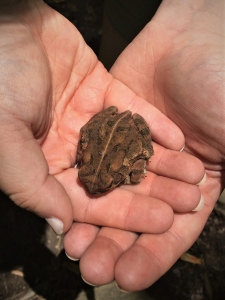
Other Helping Hands
So, I applaud the Alabama State Parks System for housing naturalists at five of our largest and most-heavily used Parks. Those five account for roughly a third of the System’s 87,000 acres, and I’m sure greater than half of user-days. As an environmental educator at-heart, I’d like to see every Park served by a naturalist on-site or a professional shared among several regionally-aggregated smaller parks. I’m inclined toward natural resources disciplinary graduates (two-year, four-year, and Master’s level). I’ve seen other types of interpreters (below) who are a little more difficult to recruit (and even tougher to train and control). More of a novelty perhaps, but in the long run not nearly as effective, reliable, and caring as our team of five wonderful humans.
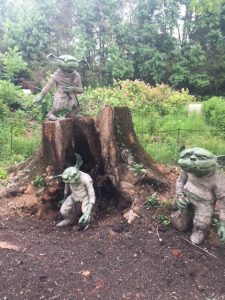
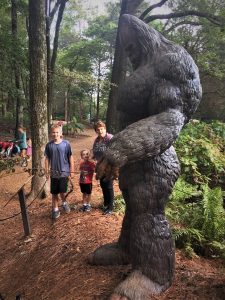
Nevertheless, applying any tool of the trade helps sow and embed the Earth stewardship and Nature appreciation message in the hearts and minds of Park visitors.
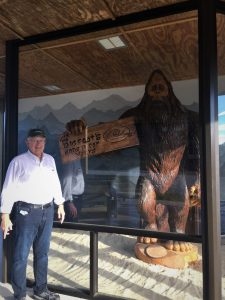
Recommendations
I offer some ideas of my own (in part inspired and informed by my interactions with the Park Naturalists) for expanding and enhancing the System’s education mission. I know full well that the Parks operate primarily by use-generated revenue. I am not suggesting that the System reallocate existing financial resources. Instead, I am advocating that gifts, grants, and donations may be sources for deepening the education thrust.
And, as a lifelong Nature enthusiast, like our Parks Naturalists, I care.
In addition to expanding statewide Parks Naturalists staffing, I see other elements complementing the education mission:
- Enhanced interpretive signage on par with Cheaha and Gulf State Park’s
- Trail pamphlets identifying trees, plants, geology, seasonally anticipated birds, and other features of nature and environment
- Permanent photo points. Watching any landscape element day-to-day reveals little. Change occurs gradually yet inexorably. Only over time can we detect the tremendous change that sweeps past us without detection when we are present day-in-and-day-out. I included a chapter on time travel (No, not of the Back to the Future type) in my still-evolving third book (Natural Elixir: Lifting Your Life through Nature’s Inspiration). Here’s a relevant excerpt referring to our 2017 re-visit after 15 years’ absence the neighborhood where we lived for five years: Let us return to our recent time travel to Auburn. As we drove back along the road with the new school, we looked at the roadside forests with open eyes. Yes, what had been a pole-sized stand now appeared to be much taller, populated with sawtimber sized trees (large enough to be sawn into lumber). Our time travel had brought us to a place far different from what we had left. I suggest placing 5-20 permanent photo-points on each Park, marking the points with vertical rebar at recorded GPS coordinates, retaking the photos every five years or so. Future Park visitors will be able to retrace change back in time via the permanent photo record.
- Motion-triggered trail cameras at key locations throughout each Park. Visitors both on-site and by internet can see what roams and inhabits the Park at night when generally we humans are not not up and about.
- These are among the many imaginative ideas available to leverage and expand existing education ventures.
Thoughts and Reflections
I wrote my books (Nature Based Leadership (2016) and Nature-Inspired Learning and Leading (2017)) and the two scheduled for 2019 (Weaned Seals and Snowy Summits: Stories of Passion for Place and Everyday Nature) and 2020 (Natural Elixir: Lifting Your Life through Nature’s Inspiration) to encourage all citizens to recognize and appreciate that every lesson for living, learning, serving, and leading is either written indelibly in or is powerfully inspired by Nature. Both published books are available on Amazon and other online sources.
Here are the three succinct lessons I draw from this Blog Post:
- Our Alabama State Parks are jewels for the ages; we deepen the public’s understanding when we effectively tell the Parks’ environmental tale!
- Knowledge inspires and spurs stewardship and appreciation.
- Passion and purpose drive effective education; knowing and caring matter.
Inhale and absorb Nature’s elixir. May Nature Inspire and Reward you!
Note: All blog post images created & photographed by Stephen B. Jones unless otherwise noted. Please circulate images with photo credit: “©2019 Steve Jones, Great Blue Heron LLC. All Rights Reserved.”
Another Note: If you came to this post via a Facebook posting or by an another route, please sign up now (no cost… no obligation) to receive my Blog Post email alerts: https://stevejonesgbh.com/contact/
And a Third: I am available for Nature-Inspired Speaking, Writing, and Consulting — contact me at steve.jones.0524@gmail.com
Reminder of my Personal and Professional Purpose, Passion, and Cause
If only more of us viewed our precious environment through my own filters. If only my mission and vision could be multiplied untold orders of magnitude:
Mission: Employ writing and speaking to educate, inspire, and enable readers and listeners to understand, appreciate, and enjoy Nature… and accept and practice Earth Stewardship.
Vision:
- People of all ages will pay greater attention to and engage more regularly with Nature… and will accept and practice informed and responsible Earth Stewardship.
- They will see their relationship to our natural world with new eyes… and will understand more clearly their Earth home.
Tagline/Motto: Steve (Great Blue Heron) encourages and seeks a better tomorrow through Nature-Inspired Living!
Alabama State Parks Foundation
I’ll remind you that I serve on the Foundation Board, in part because of my love of Nature and in recognition for my writing many prior Posts about visiting and experiencing the Parks. I urge you to take a look at the Foundation website and consider ways you might help steward these magical places: https://asparksfoundation.org/ Perhaps you will think about supporting the Parks System education imperative. Here’s a nice article about the Foundation: https://280living.com/news/foundation-formed-to-help-state-parks521/

